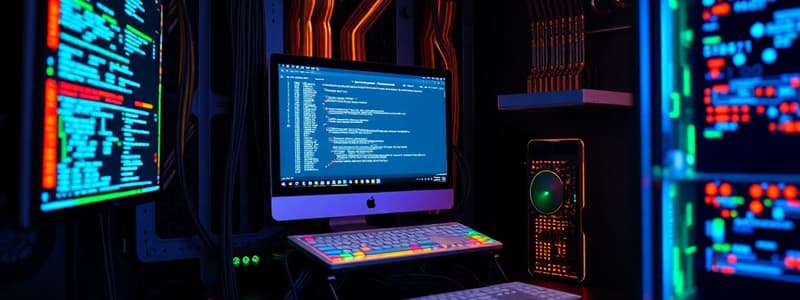Podcast
Questions and Answers
What is a characteristic feature of hard computing?
What is a characteristic feature of hard computing?
- Requires exact solutions (correct)
- Follows a flexible model
- Accepts approximate solutions
- Allows for errors in computation
Which of the following is an example of soft computing?
Which of the following is an example of soft computing?
- Traditional computing
- Fuzzy logics (correct)
- Rigid binary models
- Deterministic algorithms
How does error handling differ between hard and soft computing?
How does error handling differ between hard and soft computing?
- Errors are not accepted in both computing types
- Soft computing strictly rejects errors, hard computing accepts them
- Hard computing accepts errors, soft computing does not
- Soft computing accepts errors, hard computing does not (correct)
What type of learning does hard computing involve?
What type of learning does hard computing involve?
What is a notable difference in computation type between soft and hard computing?
What is a notable difference in computation type between soft and hard computing?
Flashcards
Hard Computing
Hard Computing
Hard computing focuses on finding exact solutions to well-defined problems using traditional algorithms and methods.
Soft Computing
Soft Computing
Soft computing uses approximations and flexible models to handle real-world problems that might be complex or uncertain.
Sequential Computation
Sequential Computation
Hard computing methods aim for precise solutions, often using a step-by-step, sequential approach.
Learning in Soft Computing
Learning in Soft Computing
Signup and view all the flashcards
Error Handling in Hard Computing
Error Handling in Hard Computing
Signup and view all the flashcards
Study Notes
Difference Between Hard and Soft Computing
- Hard Computing:
- Based on mathematical models
- Approximations are not accepted
- Exact solutions are preferred
- Computation is rigid
- Learning is not present
- Examples: Traditional Computing
- Soft Computing:
- Based on probabilistic models
- Approximations are acceptable
- Errors may be allowed
- Computation is flexible
- Learning is present
- Examples: Neural Networks, fuzzy logic, genetic algorithms.
- Includes Parallel and Sequential computations
Approaches
- Hard Computing:
- Exact solutions (Approximations are not acceptable)
- Uses mathematical models for solutions
- Computation is rigid, requiring precise inputs/outputs
- Soft Computing:
- More flexible, accepts approximations
- Allows for errors in computation
- Computation is probabilistic/ approximate
Studying That Suits You
Use AI to generate personalized quizzes and flashcards to suit your learning preferences.




